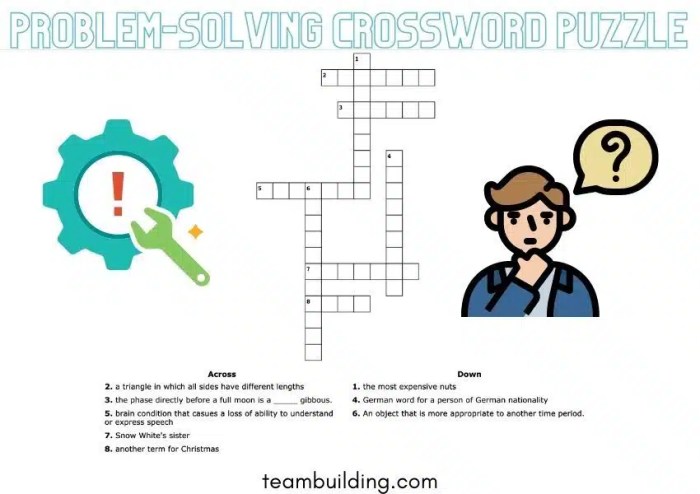
The rise of online gaming presents a fascinating opportunity to enhance cognitive skills, particularly problem-solving. Many games, through engaging mechanics and challenges, subtly train players in logical reasoning, critical thinking, and strategic planning. This exploration delves into the diverse world of online games designed to cultivate these crucial abilities, examining their benefits, limitations, and future potential.
We will explore various game genres, from puzzle games requiring meticulous deduction to strategy games demanding resource management and tactical prowess. The discussion will analyze how game mechanics, difficulty levels, and design choices contribute to effective learning. We’ll also consider the advantages of gamified learning compared to traditional methods, acknowledging potential drawbacks and suggesting strategies for maximizing the educational impact of online games.
Designing Effective Learning Games

Designing engaging and effective online learning games requires careful consideration of game mechanics, level progression, and visual elements to optimize the learning experience. A well-designed game can transform a potentially dry subject into an enjoyable and memorable learning opportunity, fostering deeper understanding and retention. This section will detail the design of a hypothetical game focused on improving logical deduction skills.
Logical Deduction Game: “The Case Files”
“The Case Files” is a mystery-solving game where players assume the role of a detective investigating a series of interconnected cases. Each case presents a unique scenario with multiple clues, requiring players to utilize logical deduction to identify the culprit and solve the mystery. The game progresses through a series of increasingly complex cases, gradually introducing new mechanics and challenges.
Game Mechanics and Level Progression
The core mechanic revolves around analyzing clues presented in various forms: witness testimonies, crime scene photos, forensic reports, and object descriptions. Players must identify contradictions, inconsistencies, and patterns within the evidence to deduce the correct solution. Levels are structured chronologically, with each case building upon the skills learned in previous ones. Early levels focus on simple deductions based on direct evidence, while later levels introduce more complex scenarios requiring players to synthesize information from multiple sources and handle red herrings.
For example, an early level might involve determining the culprit based on witness accounts and alibi information, while a later level could involve analyzing a complex web of relationships and motives to uncover a conspiracy.
Challenges and Difficulty Scaling
Challenges increase in difficulty through several methods. The number of clues increases, and the clues themselves become more ambiguous or misleading. Later levels introduce time limits, forcing players to think critically and efficiently. Additionally, some levels incorporate puzzle elements, such as cipher decryption or pattern recognition, requiring players to apply different problem-solving strategies. The game utilizes a dynamic difficulty adjustment system, observing player performance and adjusting the complexity of subsequent challenges accordingly.
Game Design Elements for Engagement and Learning
Several game design elements enhance engagement and learning. A compelling narrative, featuring engaging characters and intriguing storylines, keeps players invested in the game. The use of rewards, such as virtual badges or achievements, provides positive reinforcement and motivates players to continue playing. Immediate feedback mechanisms, providing explanations for correct and incorrect answers, help players understand the reasoning behind solutions and learn from their mistakes.
The game also incorporates a hint system, offering graduated levels of assistance without compromising the challenge.
Visual Elements Enhancing the Learning Experience
The game utilizes a visually appealing and intuitive interface. Clue information is presented clearly and concisely, using a combination of text, images, and interactive elements. Crime scenes are depicted using detailed illustrations, showcasing key evidence in a visually engaging manner. For example, a crime scene illustration might highlight footprints with arrows indicating direction of travel, or a close-up of a fingerprint with clear markings.
The user interface is clean and uncluttered, with intuitive navigation and controls, ensuring that the focus remains on the core gameplay and deduction process. A stylistic approach might use a dark, moody palette for crime scenes, contrasting with a brighter, more welcoming interface for the main menu and case selection screen. Character portraits could be used to illustrate witness testimonies, providing visual context to the narrative.
Animated transitions and subtle visual cues further enhance engagement and clarity.
Future Trends in Online Games for Learning

The landscape of online educational games is rapidly evolving, driven by advancements in technology and a growing understanding of effective learning methodologies. We’re moving beyond simple quizzes and toward immersive, adaptive experiences that cater to individual learning styles and provide personalized feedback. This shift promises to make learning more engaging and effective, particularly in the crucial area of problem-solving skill development.The potential for incorporating new technologies like Virtual Reality (VR) and Augmented Reality (AR) is particularly exciting.
These technologies offer the chance to create truly immersive learning environments, allowing students to actively participate in simulated scenarios and apply their problem-solving skills in realistic contexts. This hands-on approach is significantly more effective than passive learning methods.
Immersive Learning Environments Through VR/AR
VR and AR technologies are transforming how we design and deliver educational content. Imagine a history lesson where students don VR headsets and find themselves walking through ancient Rome, interacting with virtual citizens and solving historical puzzles. Or, in a science class, students use AR apps to overlay interactive 3D models of the human heart onto their textbooks, allowing them to explore its intricate workings.
These immersive experiences go beyond simple visualization; they allow for active participation and manipulation of virtual objects, fostering deeper understanding and improved problem-solving capabilities. For example, a VR-based engineering design challenge could task students with building a bridge under specific constraints, providing immediate feedback on their designs and encouraging iterative improvements. The real-world applications of such technologies are already being explored in fields such as medical training, where surgeons can practice complex procedures in a safe, virtual environment, and architectural design, where students can visualize and manipulate building plans in 3D space.
AI-Powered Adaptive Learning
Artificial intelligence (AI) is poised to revolutionize online learning games by providing personalized learning experiences. AI algorithms can analyze a student’s performance, identify their strengths and weaknesses, and dynamically adjust the difficulty and content of the game to optimize their learning. This adaptive approach ensures that students are always challenged appropriately, preventing boredom and frustration while maximizing their engagement and learning outcomes.
For instance, an AI-powered math game might initially focus on fundamental concepts if a student is struggling, gradually increasing the complexity as their skills improve. This personalized approach, tailored to individual needs, significantly enhances the effectiveness of learning games in improving problem-solving skills.
Gamification and Personalized Feedback
The future of online games for learning will likely see an increased emphasis on sophisticated gamification techniques and personalized feedback mechanisms. This involves incorporating elements of game design, such as points, badges, leaderboards, and narrative storylines, to enhance motivation and engagement. Simultaneously, providing detailed and timely feedback on a student’s performance is crucial for fostering self-reflection and improvement.
Imagine a game where students receive not just a score, but also specific suggestions on how to improve their strategies and approach to problem-solving. This combination of engaging gameplay and personalized feedback creates a powerful learning loop that drives continuous improvement. Successful examples of this approach already exist in popular language learning apps, which utilize points, rewards, and progress trackers to keep users engaged and motivated.
Prediction of Future Evolution
Within the next decade, we can expect online games for learning problem-solving skills to become increasingly sophisticated and personalized. We will see a greater integration of AI, VR/AR, and gamification techniques, resulting in immersive, adaptive learning experiences tailored to individual student needs. These games will likely incorporate real-world scenarios and collaborative problem-solving challenges, mirroring the complexities of real-life situations.
For example, a game might simulate managing a city’s resources during a natural disaster, requiring students to make strategic decisions under pressure and collaborate with others to find optimal solutions. This will move beyond rote learning and towards the development of critical thinking, creativity, and adaptability—essential skills for success in the 21st century.
Ultimately, online games offer a compelling and engaging avenue for developing problem-solving skills. By understanding the mechanics that foster cognitive growth and leveraging effective game design principles, educators and developers can create immersive learning experiences. As technology continues to evolve, the potential for online games to revolutionize education and skill development remains immense, paving the way for innovative and effective learning solutions.
Question Bank
Are all online games beneficial for problem-solving?
No, the effectiveness depends on game design and mechanics. Games requiring strategic thinking, planning, and adaptation are most beneficial. Simple, repetitive games offer limited cognitive benefit.
How can I choose suitable games for my skill level?
Start with games offering adjustable difficulty levels. Begin at an easier setting and gradually increase the challenge as your skills improve. Reviews and player feedback can also guide your selection.
Are there age-appropriate considerations for using online games for learning?
Absolutely. Choose games with age-appropriate content and complexity. Parental supervision and guidance are crucial, especially for younger players, to ensure safe and effective learning experiences.





